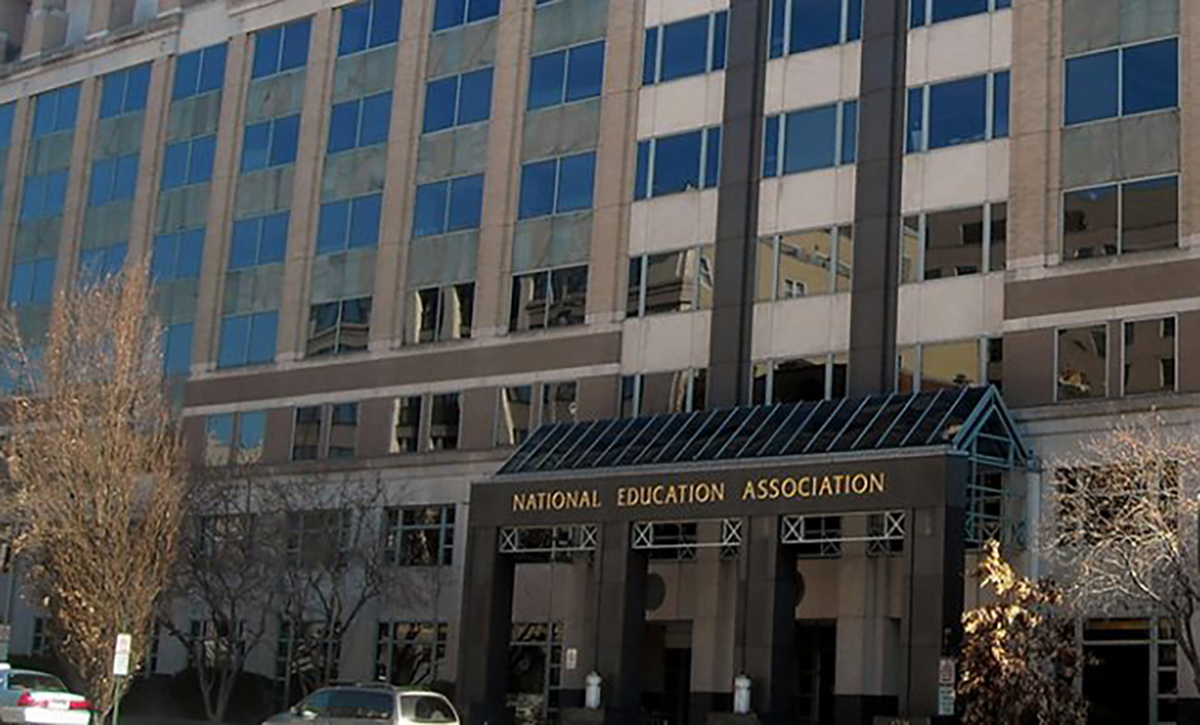Analysis: Schools Closed, Membership Fell. NEA’s Take Still Rose by $35M in 2020
One might think membership losses and a teetering economy would lead to decrease in revenue for the union & its affiliates. But the opposite happened

Get stories like this delivered straight to your inbox. Sign up for The 74 Newsletter
Mike Antonucci’s Union Report appears most Wednesdays; see the full archive.
The 2019-20 school year will be forever remembered as the one ended abruptly by COVID. School employee layoffs and resignations spiked, wiping out years of workforce growth.
What might have been a good membership year for the National Education Association ended with a loss of 2,553 working members. Membership in 30 state affiliates declined.
One might think these losses and a teetering economy would lead to decrease in revenue for NEA and its affiliates. But the contrary occurred. Their revenue increased more than 2%, reaching a combined total of almost $1.7 billion for 2019-20 — an increase of $35 million from the previous year — almost all of it exempt from income and capital gains taxes.
All the financial information comes from the unions’ annual disclosure reports for the Internal Revenue Service detailing their income and expenditures. These are public records, but delays in reporting and availability mean a long wait before it is possible to gather comprehensive data from unions in all 50 states.
NEA national headquarters alone took in more than $396.5 million, an increase of 5% over its 2018-19 total. This additional income made it easier for the union to bolster the finances of struggling state affiliates. Eleven state affiliates received more than 20% of their total revenue from NEA subsidies.
Most of those subsidies come in the form of UniServ grants, which help pay the salaries of each state affiliate’s labor relations directors. More than 2,200 NEA and state affiliate employees earned in excess of $100,000 in 2019-20, a level many smaller affiliates could not afford to pay without the help of NEA national.
Many state affiliates have sufficient reserves to operate for a year or more with no additional revenue. But eight have a negative net worth; that is, the sum total of their liabilities exceeds the value of their assets.
These eight — Connecticut, Georgia, Illinois, Michigan, Nevada, New York, Washington and West Virginia — are a combined total of more than $606.5 million in the red.
Most of this is due to union staff pension and retiree health liabilities. Much like some school systems and state governments, these teachers unions don’t have enough money on hand to cover the obligations they negotiated with their own employees. What keeps them afloat is the calculation that the influx of dues from current teachers will continue unabated, and that the pension system’s investments will turn a large enough profit.
Before the U.S. Supreme Court’s 2018 Janus ruling, which made paying union dues or fees optional for all public school employees, NEA and its affiliates could count on a direct relationship between increases in the school workforce and in union membership. Now, the hiring increases must be sufficiently large to make up for the fact that many new employees might decide not to join the union.
NEA and many of its affiliates tie dues levels to the average teacher salary. So even if membership doesn’t rise, but salaries do, union income will grow.
All this is to say the well-being and stability of teachers unions are interwoven with public policy decisions made by governments and school boards regarding hiring, layoffs and pay. The unions know this, of course, but it’s not clear if those decisionmakers do.
Get stories like these delivered straight to your inbox. Sign up for The 74 Newsletter

;)